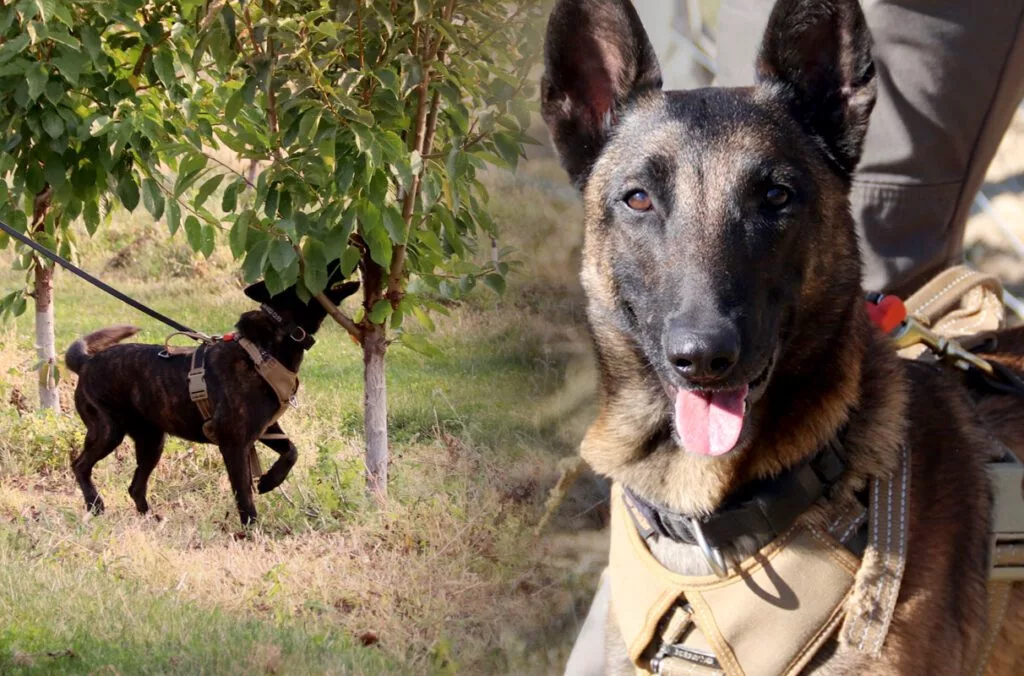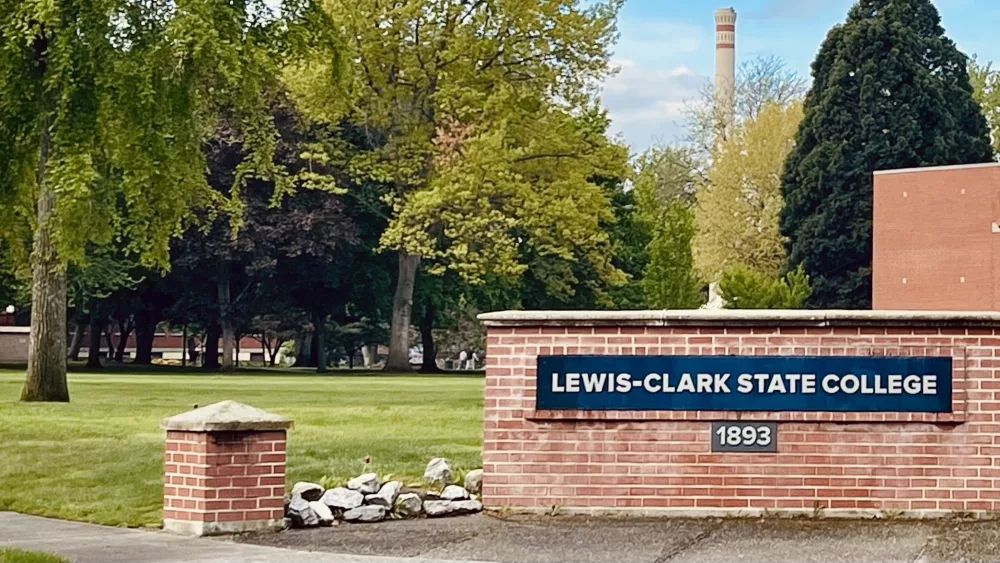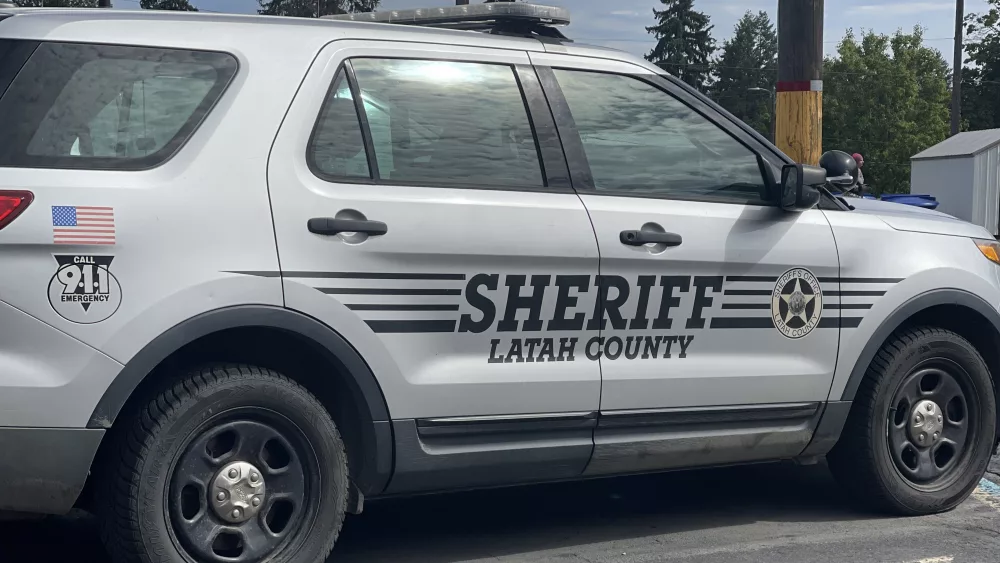PROSSER, WA — A new tool with four furry legs and an ultra-sensitive nose may soon offer the tree fruit industry a more reliable way to quickly detect Little Cherry Disease (LCD).
As part of a two-year project, Washington State University researchers are working with a pair of specially trained dogs and their handler to conduct field trials with infected cherry trees. The study, funded by the Washington Tree Fruit Research Commission (WTFRC) and the Northwest Nursery Improvement Institute, showed that the canines’ exceptional detection skills could offer a promising alternative to the current standard, polymerase chain reaction (PCR) tests.
“We don’t know what the two dogs are detecting in the infected trees, but speed and sensitivity are the main takeaways of our study,” said Scott Harper, associate professor in WSU’s Department of Plant Pathology. “The dogs are excellent at picking up low concentrations of the pathogen, which is hard to do by PCR testing. The dogs are also faster.”
PCR tests are expensive, and the results are far from instantaneous. For example, dissecting just one tree for PCR testing can take an entire day.
“These tests are not commercially viable for many growers,” said Corina Serban, WSU tree fruit extension educator. “Establishing another way to stay ahead of the disease will be very valuable to the tree fruit industry.”
Caused by one of three pathogens, LCD results in small, unripe, unmarketable cherries. Symptoms are typically only visible on the fruit during the harvest period; the rest of the year, the tree appears healthy.
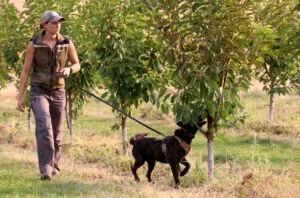
“Without visible fruit, growers don’t know if their trees are infected,” Serban said. “Every year an infected tree stays in the ground, it could potentially infect additional trees.”
Because the incurable disease only presents itself in small areas of the tree, especially in the early stages of infection, testing is challenging.
“PCR tests rely on tree tissue samples,” Harper said. “Without symptoms to guide you, it’s hard to tell where in the tree the disease is present. You’re sampling blind and will probably miss it.”
LCD is spread through grafting and planting of infected materials or via insects like mealybugs and leaf hoppers. The only sure antidote is expensive: ripping the tree out and replacing it with a new tree that takes roughly five years to reach full-scale production.
In search of a solution, Harper and Serban established a partnership in May 2023 with Jessica Kohntopp, an Idaho-based dog trainer who had previously taught canines to sniff out COVID-19 as well as viruses that infect tomatoes, squash, and citrus. For the WSU study, Kohntopp trained two dogs specially bred for detection work: Humma, a Dutch Shepherd, and Aika, a Belgian Malinois.
“I’m passionate about this work,” Kohntopp said. “I don’t want growers to tear up their entire nursery because of this disease. I knew the dogs could help, and that I could successfully train them.”
Kohntopp used infected and healthy potted cherry plants to teach Aika and Humma how to detect the disease. She trained the dogs to alert by stopping next to only the positive plants, rewarding them with a favorite toy each time they signaled accurately.
“For them, it’s a game, not a job,” Kohntopp said. “They’re so excited when they find the positive plants.”
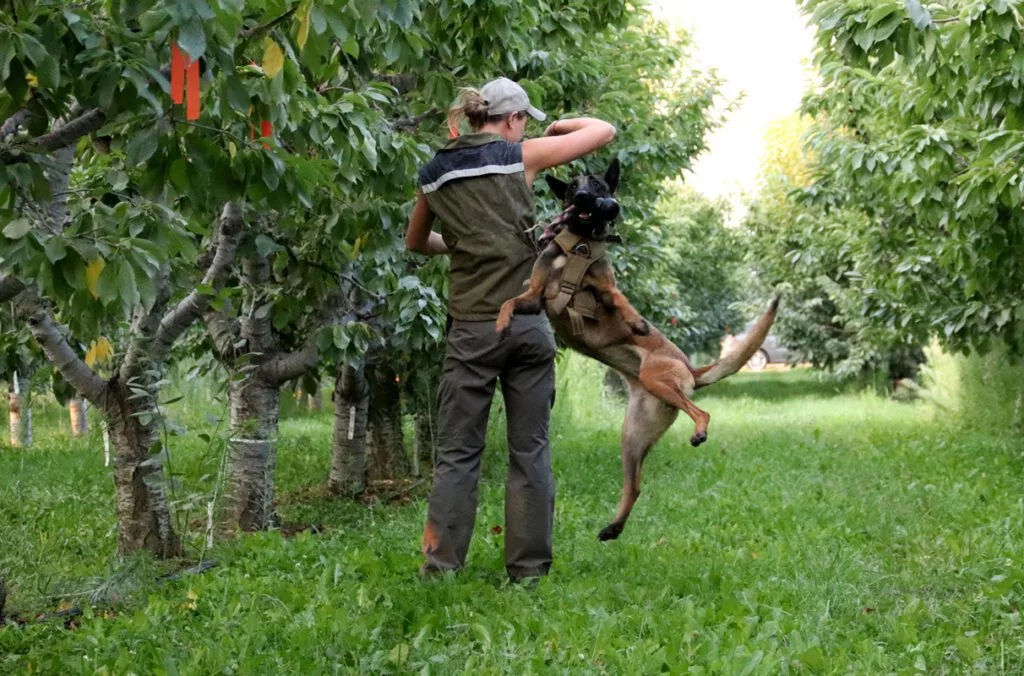
Beginning in March 2024, the WSU researchers tested the newly trained dogs’ capabilities with a series of trials. The first took place in a greenhouse at the WSU Prosser Irrigated Agriculture Research Extension Center. When presented with nearly 200 plants, the dogs successfully found all seven positive trees and alerted on an additional plant, which later tested positive. Several months later, the researchers conducted a blind controlled study in which Kohntopp was unaware of the plants’ infection status.
“We were trying to validate the accuracy, sensitivity, and specificity of the canines,” Serban said. “We also wanted to ensure that Jessica wasn’t unintentionally cueing the dogs to alert at plants she knew were positive.”
In the blind study, each dog sniffed 1,380 plants, 101 of which were positive. Though both dogs missed a handful of infected trees, neither of them false alerted. An additional mini-study showed that the canines had a combined accuracy rate of 99.72%.
One especially promising trial involved five trees from a commercial orchard. The plants had previously tested negative, but Humma and Aika indicated otherwise. To confirm, the researchers dug up the five trees to PCR test them more rigorously.
“We cut them up, averaging 100 samples per tree,” Harper said. “The dogs were right every time — the trees were all positive.”
The five-tree trial also demonstrated that the dogs can sniff out LCD at very low levels.
“The positive PCR samples all came back as weak positives,” Serban said. “This indicates that the dogs can detect the disease even at low concentrations.”
After the current project wraps up in May, the researchers plan to submit a proposal to extend their WTFRC funding. With additional support, they hope to study whether dogs can sniff out infected bundles of trees at nurseries, potentially stopping LCD before it reaches the orchard. The researchers also want to discover how tree dormancy periods affect the dogs’ detection abilities.
The eventual goal is to make dogs like Aika and Humma widely accessible for commercial growers.
“We want to scale this to help the industry,” Serban said. “The biggest challenge is using science to prove the dogs’ accuracy. Our research is still ongoing, but it’s very promising so far.”

